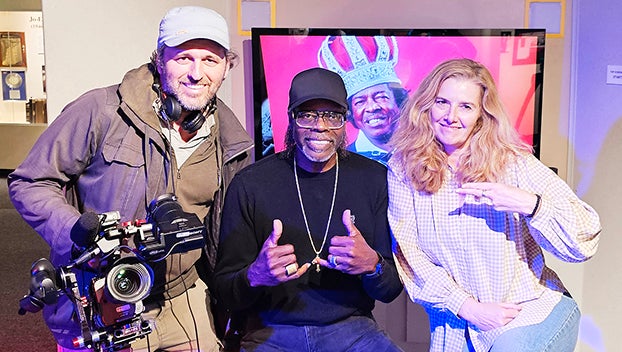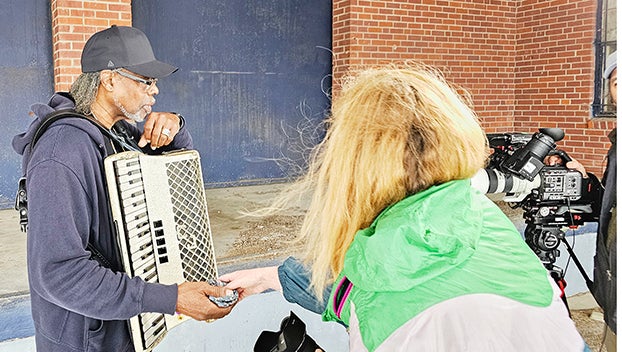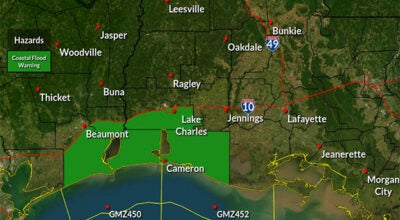Museum creates hub of activity for national, international crews in Port Arthur
Published 12:30 am Saturday, March 23, 2024

- Journalist/reporter Bertrand Saliou, left, and journalist/director Emma Piesse, right, pose for a photo this week with musician C.J. Chenier. The Paris crew was in town recording a segment for a TV show, “Invitation au Voyage.” (Courtesy photo)
|
Getting your Trinity Audio player ready...
|
The Museum of the Gulf Coast has the task of collecting and storing the area’s history in a backdrop that entices visitors from around the world.
The Museum, located at 700 Procter Street, is serving as source material this month for not one but two musical and cultural related sets of visitors.
Scott W. Berg visited earlier while collecting information related to the cultural changes that impacted music in 1957-1959. Berg is a professor of nonfiction writing at George Mason University in Virginia, as well being a journalist and author of several books.
Looking at music from the late 1950 shows artists such as Pat Boone, Elvis and the three artists, Buddy Holly, Ritchie Valens and “The Big Bopper” J.P. Richardson.
Richardson was born in Sabine Pass and grew up in Beaumont. He was also a disc jockey while at Lamar College (currently Lamar State College Port Arthur).
Tom Neal, director of the Museum, facilitated a number of interviews with those who had connections with the Big Bopper, including Sam Monroe, president of the Port Arthur Historical Society and who used to work at KPAC radio as a teenager.
Berg also got to meet Marge Hall, the widow of William G. “Bill” Hall, who was The Big Bopper’s representative. The now deceased Hall produced such artists as Jiving’ Gene, Johnny Allen, Johnny and Edgar Winter and Tex Ritter, to name a few.
Neal recalls a story of how Richardson was in he back seat with Hall and his wife driving Highway 90 to Houston to record the song, “Purple People Eater Meets the Witch Doctor.”
The conversation turned to speculation on what the B side of the record would be. Richardson said probably a Hank Williams song, when Hall reminded him of a song in the works about a girl on the phone with a guy. The song became “Chantilly Lace.”
Neal said there are sources for research in the specific music genre but some of the information can’t be found in a book. It’s right here in our area.

Musician C.J. Chenier prepares to perform this week in Port Arthur for journalist/director Emma Piesse and journalist/reporter Bertrand Saliou. (Courtesy photo)
The Museum also had a visit from the international team of journalist/director Emma Piesse and journalist/reporter Bertrand Saliou for a segment for French TV show “Invitation au Voyage.”
The group spent time at the Museum and met Zydeco musician C.J. Chenier, son of Grammy Award winning Clifton Chenier.
During the visit, C.J. performed on the accordion and the metal washboard, also known as frottoir (pronounced froh-twahr).
The frottoir is recognized as the only musical instruction with an origin in the U.S., all other instruments were brought culturally, Neal said.
Willie Landry made the first frottoir for Clifton and his brother, Cleveland Chenier. All three men worked at Gulf Refinery at the time.
Neal said rubbing the metal with bottle openers plays the frottoir, and C.J. said his father and uncle would have six in each hand.
Using different patterns of movement with the bottle openers makes for different music, from waltz style to dance, and C.J. demonstrated different playing styles for the visitors from Paris.
Neal gave special thanks to the Port Arthur Convention and Visitors Bureau for their help with the recent sets of visitors.





